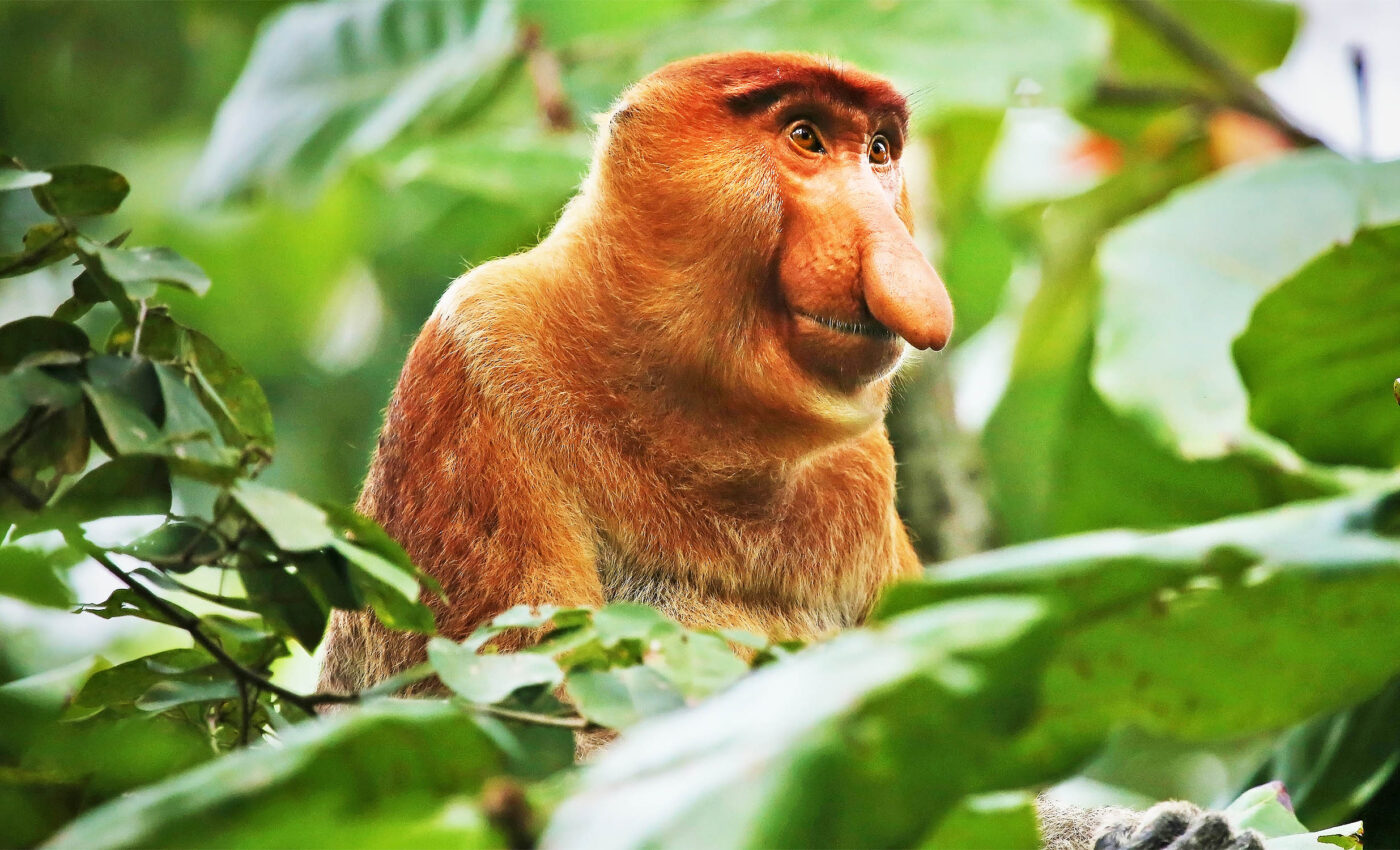
Male proboscis monkeys use their big noses to attract mates
Proboscis monkeys, those famously odd-looking primates with the pendulous noses, have long puzzled scientists and delighted tourists. Are their extraordinary noses merely a cruel joke of nature, or do they serve a purpose?
Thanks to recent research from the Australian National University (ANU), we finally have an answer. It turns out, these monkeys’ noses are all about love. Or, at least, for attracting a mate.
Proboscis monkeys (Nasalis larvatus)
Male proboscis monkeys, scientifically known as Nasalis larvatus, are fascinating primates native to the island of Borneo in Southeast Asia.
They inhabit coastal mangroves, swamps, and riverine forests. Known for their distinctively large, pendulous noses, these monkeys have earned the nickname “Dutch monkeys” due to their resemblance to early Dutch settlers in the region.
Beyond their unique noses, male proboscis monkeys are notable for their large bellies, caused by a specialized digestive system that helps ferment the leaves they consume.
They are excellent swimmers, with webbed feet that aid in navigating their watery habitats. Males can reach up to 24 kg (53 lbs), making them significantly larger than females.
Living in harems, a dominant male leads a group of several females and their offspring. They are diurnal, meaning they are active during the day, and they rely on vocalizations, such as honks and roars, for communication within their dense forest homes.
Sadly, these monkeys are classified as endangered due to habitat loss and hunting.
Monkey’s with “ugly” nose
Native to the lush jungles of Borneo, proboscis monkeys have often been unfairly dubbed one of the world’s ugliest animals due to their prominent noses.
But beauty, as they say, is in the eye of the beholder. And for female proboscis monkeys, a big nose is a major turn-on.
Dr. Katharine Balolia, the lead author of the study, and her team used 3D scans of monkey skulls from museum collections to delve into the secrets hidden within these unique nasal structures. What they discovered was a fascinating connection between nose size, vocalizations, and mating success.
Proboscis monkeys have a nose for sound
“We wanted to understand why male proboscis monkeys’ noses are so big, and whether their nasal cavities have a distinctive shape,” said Dr. Balolia.
Researchers found that male proboscis monkeys have nasal cavities that are both significantly larger and shaped differently compared to those of females.
This difference in anatomy allows males to produce much louder and deeper calls. These calls, often described as “honks and nasal roars,” are essential for communication in their dense jungle habitats.
For example, in the thick forests of Borneo, it is difficult for proboscis monkeys to see each other through the heavy vegetation. In such an environment, sound becomes a crucial means of communication.
The louder and deeper calls of the males can travel further through the dense foliage, making it easier for them to communicate their presence and attract potential mates.
The larger nasal cavity in males acts like a built-in amplifier, boosting the volume and depth of their calls. This amplified sound serves to broadcast their desirability to female monkeys.
Bigger is better for proboscis monkeys
“Being able to emit louder and deeper calls thanks to a longer and larger nasal cavity helps male monkeys to assert their health and dominance. This helps the male monkeys attract females and ward off other males,” Dr. Balolia explained.
In other words, a big nose translates to a big voice, and a big voice translates to increased mating opportunities.
This evolutionary advantage has led to the selection of larger noses over time, as females have come to associate them with desirable traits like health and dominance.
The researchers also noted that the bony nasal cavity opening of male proboscis monkeys grows larger with age, coinciding with their peak dominance and reproductive prowess.
“Ugly” to some, irresistible to others
While proboscis monkeys’ noses may not conform to traditional standards of beauty, they are a testament to the power of evolution.
These seemingly bizarre features have evolved to serve a vital function in the monkeys’ social and reproductive lives.
The next time you see a picture of a proboscis monkey, remember that their large nose is not just a quirk of nature, but a symbol of their evolutionary success.
So, perhaps we should reconsider our perception of these monkeys’ noses. Instead of seeing them as “ugly,” we should appreciate them as remarkable adaptations that have helped these primates thrive in their unique environment.
After all, beauty is not just about aesthetics; it’s about survival and reproduction. And in the world of proboscis monkeys, a big nose is the ultimate symbol of desirability.
The research is published in Scientific Reports.
—–
Like what you read? Subscribe to our newsletter for engaging articles, exclusive content, and the latest updates.
Check us out on EarthSnap, a free app brought to you by Eric Ralls and Earth.com.
—–













